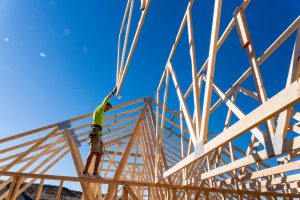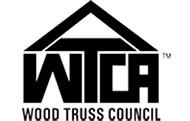
Labor shortages and supply chain delays during the pandemic have created a housing crisis in North America. The average price of homes has increased year-over-year since 2018 and the pace of new builds isn’t keeping up with demands. If construction is to meet future demand, a united effort will have to be made by every sector of the industry.
What Caused the Labor Shortage?
The Great Recession
During the Great Recession which started in 2006, the construction industry lost 2.2 million workers between its residential and commercial branches which made up 29% of the industry total population. This economic downturn combined with an increase in immigration enforcement in the US saw the loss of many construction professionals.
“In the wake of the Great Recession, the residential construction industry lost 1.5 million jobs. Tens of thousands of homebuilders went out of business. The workforce really fell,” explained Robert Dietz, chief economist at the National Association of Home Builders. “Building that kind of infrastructure and human capital takes time. Years later, we’re still clawing our way back.“
The Great Resignation
During the pandemic, many construction companies downsized their crews and many workers opted out of the workforce, creating a phenomenon called the Great Resignation.
An Aging Workforce
On average, one in five workers in the construction industry are 55 or older. According to Bureau of Labor Statistics data, the median age of construction workers in 2022 was 41.2 with 45% being 45 or older. As these workers reach retirement age, the labor shortage is set to get even worse.
A Lack of EducationPrograms
“Part of the problem lies in the lack of interest from younger workers to work in construction despite the surplus of high-paying positions on job sites,” says Alicia Hearns from Giatec Scientific. “In high schools and colleges around the United States, four-year degrees and white-collar jobs have long been emphasized over the skilled trades, with certain vocational programs being cut altogether. Even the healthcare and social services industries are being chosen over construction.”
Consequences of the Labor Shortage
Lack of Skilled Labor Puts Crews at Risk
An increase in wages means some companies can afford fewer skilled professionals. With labor shortages, crews have a bigger workload which can lead to fatigue and a reduction of build quality. This can be compounded by a reliance on less qualified construction workers.
With a reduction in the number of employees as well as an increased workload, some companies may not have the resources to properly implement safety protocols and training. This may lead to an increased risk for construction crews.
Rising Costs of Construction
Between 2018 and 2021, construction prices have continued to increase. “The housing market faces both demand-side and supply-side challenges,” said NAHB Chief Economist Robert Dietz. “Residential construction material costs are up 19% year-over-year with cost increases for a variety of building inputs, except for lumber, which has experienced recent declines due to a housing slowdown.” While several factors contribute to this increase, labor shortages are one of the major reasons for rising prices and housing shortages.
Cancellations
With not enough skilled construction employees to fill all vacant spots, projects may experience delays and some projects have even been cancelled.
How to Overcome the Labor Shortage
United Efforts to Overcome Labor Shortages
All sectors of the construction industry must work together to overcome the labor shortages. A shift in education to encourage more young people to take up the trades is a good first port of call. Unions and construction companies should offer scholarships and internships.
Encouraging Women
More women should also be encouraged to join the construction industry. Since the construction industry needs to add 723,000 jobs per year to keep up with demand, which means that that the industry must increase its current intake of 2,000 new workers per month by 30 times just to meet demand.
















